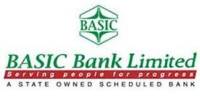For more parts of this same post, click the links below-
Procedure of Opening L/C: A Case of Uttara Bank Limited (Part-1)
Procedure of Opening L/C: A Case of Uttara Bank Limited (Part-2)
Procedure of Opening L/C: A Case of Uttara Bank Limited (Part-3)
Procedure of Opening L/C: A Case of Uttara Bank Limited (Part-4)
Documentary Drafts (Bill of Exchange):
Drafts are a popular and common method of financing exports. A draft is a written instrument drawn by one party (exporter) on a buyer for certain sum of money at sight (D/P) or at some definite future time. Since World War II, Letters of credit have become less popular because of competition.
When using drafts, we and the buyer usually agree beforehand that the transaction will be on a sight draft basic or perhaps on a 60 or 90 days deferred payment basis (60 SD, DA).
- Sight Draft Document Against Payment (S/D, D/A): The overseas importer orders merchandise directly from us, and we arrange to ship the goods. We then take us shipping documents and our own drafts, drawn on the importer, to our bank. Our bank U.S. bank forwards all documents to its correspondent bank overseas. This overseas bank notifies the importer when the documents arrive. If terms are payment at sight, this arrangement would be called a sight draft document against payment (S/D, D/A), and the importerwould be required to pay immediately to obtain the shipping documents so she or he can pick up the goods.
- Document Against Payment (D/A): If the importer has agreed to “accept” (pay letter) (D/A) the draft, he or she is permitted to obtain the documents by accepting the draft and the merchandise but is not obliged to make payments until the draft matures (e.g. 60 days D/A). The exporter will, of course, have established credit locally and made arrangements with his or her bank prior to undertaking the shipment.
Two other types of drafts are used less frequently: time drafts and date drafts.
1. Time Draft: They are used to give the buyer better financing because they are forms of deferred payment. In the case of Time Draft, the buyer may take possession of the merchandise with payment deferred.
2. Date Draft: With a Date Draft, the seller retains the title of goods until payment. The main problem with this type of financing is the possibility of the buyer being insolvent when the drafts are presented for payment. Therefore, before offering such terms, we should be fairly certain of the buyer’s financial stability.
Documents required for New Importer while Opening L/C:
An importer should follow the relevant import formalities while the importer tends to import goods to Bangladesh. A list of significant documents which are required for a new importer while opening a L/C is given below:
- Account to be maintained with the bank.
- Valid Import Registration Certificate (IRC).
- Bonded warehouse license (in case of export oriented industry).
- Pro-forma Invoice (PI) issued by the foreign supplier.
- Insurance cover note.
- Trade license.
- TIN (Tax Identification Number) Certificate.
- VAT (Value Added Tax) Certificate.
- Declaration in triplicate regarding the payment of income tax by the importer.
- Letter of Credit Authorization Form duly filled in and signed by the importer.
- One set of IMP form duly signed by the importer.
- Valid membership certificate from a registered Chamber of Commerce and Industry or Trade Association.
- Membership certificate from BGMEA (Bangladesh Garment Manufacturers and Exporters Association) in case of Garments Industry.
- Proof of payment of renewal fees for the IRC.
- Certificate of incorporation with RJSC (Registrar Join Stock Companies).
- Certificate of commencement.
- Resolution of Board of Directors.
- Any such documents as may be required as per Import Policy Order (IPO).
Discrepant Documents:
A list of common discrepancies is given below:
- Unclean Bill of Lading.
- Bill of Lading.
- Bill of Lading undated.
- Shipment effected from port other than that stipulated in the credit.
- Goods shipped on deck (unless stipulated in the credit).
- Full set of bill of lading not presented.
- Certificate of country of origin not presented.
- Certificate notifying insurance company of shipment not presented.
- Weighment certificate not presented.
- Cuttings or alterations in documents not authenticated.
- Documents inconsistent with each other.
- Description of goods on invoice differs from that in the credit.
- Weights differ between documents.
- The amount shown in invoice and bill of exchange differ.
- Shipping marks and numbers differ between documents.
- Credit amount exceeded.
- Credit expired.
- Documents not presented in time.
- Late shipment.
- Short shipment.
- Absence of documents called for in the credit.
- Bill of exchange drawn on a wrong party.
- Bill of exchange payable on an indeterminable date.
- Absence of signatures in the documents.
- Packing list not submitted.
- Inspection certificate not submitted.
- Unit price not mentioned in invoice.
Operations of Documentary Letter of Credit (L/C):
The following five major steps are involved in the operation of a documentary Letter of Credit:
- 1. Issuing.
- 2. Advising.
- Amendment (If necessary).
- Presentation.
- Settlement.
1. Issuing Letter of Credit: Before issuing L/C, the buyer and seller located in different countries, concludes a “sales contract” providing for payment by documentary credit. As per requirement of the seller, the buyer then instructs the bank-the issuing bank-to issue a credit in favor of the seller (beneficiary).Instruction or application for issuing a credit should be made by the buyer (importer) in the issuing bank’s standard form. The credit application, which contains the full details of the proposed credit, also serves as an agreement between the bank and the buyer. After being convinced about the ‘necessary conditions’ contained in the application form and ‘sufficient conditions’ to be fulfilled by the buyer for opening a credit the opening bank then proceeds for the credit to be addressed to the beneficiary.
2. Advising a Letter of Credit (L/C): Advising through a bank is a proof of apparent authenticity of the credit to the seller. The process of advising a credit consists of forwarding the original credit to the beneficiary to whom it is addressed. Before forwarding, the advising bank has to verify the signature of the officer of the opening bank and ensures that the terms and conditions of the credit are not in violation of the existing exchange control regulations and other regulations relating to export. In such act of advising, the advising bank does not take any liability.
3. Amendment of Credit: Parties involved in a L/C, particularly the seller and the buyer cannot always satisfy the terms and conditions in full as expected due to some obvious and genuine reasons. In such a situation, the credit should be amended.
In case of revocable credit, it can be amended or cancelled by the issuing bank at any moment and without prior notice to the beneficiary. But in case of irrevocable credit it can neither be amended nor canceled without the agreement of the issuing bank, the confirming bank (if any) and the beneficiary.
4. Presentation of Documents: The seller being with the terms and conditions of the credit proceeds to dispatch the required goods to the buyer and after that, has to present the documents evidencing dispatching of goods to the negotiating bank on or before the stipulated expiry date of the credit. After receiving all the documents, the negotiating bank then checks the documents against the credit. If the documents are found in 0rder, the bank will pay, accept or negotiate to the issuing bank. The issuing bank also checks the documents and if they are found as per credit requirements, either.
- Effects payment.
- Reimburses in the pre-agreed manner.
5. Settlement: Settlement means fulfilling the commitment of issuing bank in regard to effecting payment subject to satisfying the credit terms fully. This settlement may be done under three separate arrangements as stipulated in the credit.
- Settlement by Payment: Here the seller presents the documents to the paying bank and the bank then scrutinizes the documents. If satisfied, the paying bank makes payment to the beneficiary and in case this bank is other than the issuing bank, then sends the documents to the issuing bank if the issuing bank is satisfied with the requirements, payment is obtained by the paying bank them the issuing bank.
- Settlement by Acceptance: Under this arrangement, the seller submits the documents evidencing the shipment to the accepting bank accompanied by the draft drawn on the bank (where credit is available) at the specified tenor. After being satisfied with the documents, the bank accepts the documents and draft and if it is a bank than the issuing bank, then sends the documents to the issuing bank stating that it has accepted the draft and at maturity the reimbursement will be obtained in the pre-agreed manner.
- Settlement by Negotiation: This settlement procedure starts with the submission of documents by the seller to the negotiating bank accompanied by a draft drawn on the buyer or any other drawee, at sight or at a tenor, as specified in the credit. After scrutinizing that the documents meet the credit requirements, the bank may negotiate the draft. This bank, if other than the issuing bank, then sends the documents and the draft to the issuing bank. As usual, reimbursement will be obtained in the pre-agreed manner.
Findings:
- Lack of modern technology.
- Higher educated and smart employees are not present.
- Sitting space for customers is not sufficient.
- The decoration and environment of this branch is poor compare with other banks.
- Workloads on the employees are too heavy; it also creates problems to provide proper services.
- This branch has no customer services department.
- Customer turnover is high.
- This branch offers only a few loan schemes to customers.
Recommendation:
Uttara Bank Limited is successfully doing their business in Bangladesh. From the findings it has been found that the overall position of the bank is satisfactory. But in some case it has been found that their performance is below the optimum level. As an old bank in Bangladesh, UBL can follow the following recommendations to improve their business.
- Uttara bank Ltd (Tongi Branch) should use modern technology to provide better services and attract to customers.
- UBL should be needed to provide standard payment structure. It will be very easy to attract and retain higher educated employees.
- UBL should need to increase sitting space for customers by this way customers will be satisfied and attracted.
- The authority of UBL should decorate it nicely both inside and outside of the branch.
- To reduce workloads of the employees the bank should use latest technology and provide training to employees.
- UBL should open customer care department within very short time customer so that customers get there required information easily.
- UBL should open ATM card, debit card, marriage loan, home loan, educational loan, car loan; it should open different types of schemes to reduce the customer turnover.
- UBL should offer all types of loan scheme which is already offers by the other branches, like commercial lending (Export, Import, Internal trade).
Conclusion:
Banking sector being a service of Bangladesh continues to contribution to a great in the economy of Bangladesh. Uttara Bank Ltd. is one of the leading banking services of the country. Though UBL is the new entrants in the banking industry, it has already shown huge potentials 7 years of operation.
I observe the total foreign exchange department very carefully while completing my internship in UBL. With a keen attention and observation the study has been tried to complete. The following are some extract of the major findings:
- For the effectiveness of the foreign exchange department, UBL has divided the whole department into three major parts, which are Export, Import, and Remittance.
- The monitoring system of the command is strictly maintained here. The executives now and then visit the department, which keeps all the officers alert about their duty.
- Sometime officers show negligence to the clients, which have a negative impact on its service.
I also think that there is bright future waiting for the Uttara Bank Ltd. and UBL is in a position to go as a catalyst for third development in the banking sector in Bangladesh. Another thing I have to mention here that the UBL is going through the oath in which they need to go and as like today it will bring more and welfare oriented activities in the banking sector in the years to come.
















